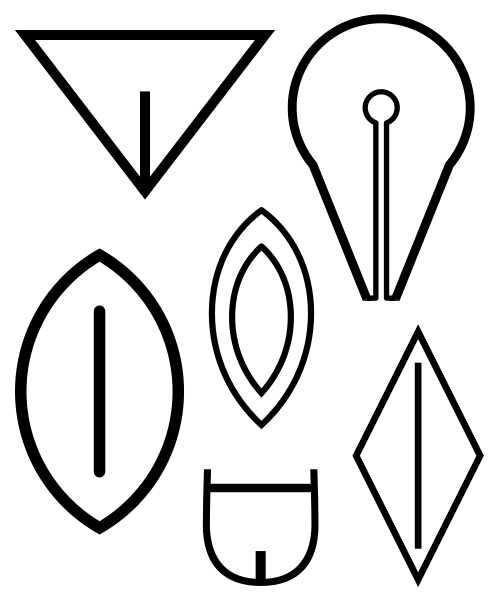Файл:Vulva symbols.svg
Перейти до навігації
Перейти до пошуку

Розмір цього попереднього перегляду PNG для вихідного SVG-файлу: 500 × 600 пікселів. Інші роздільності: 200 × 240 пікселів | 400 × 480 пікселів | 640 × 768 пікселів | 853 × 1024 пікселів | 1707 × 2048 пікселів.
Повна роздільність (SVG-файл, номінально 500 × 600 пікселів, розмір файлу: 3 КБ)
Історія файлу
Клацніть на дату/час, щоб переглянути, як тоді виглядав файл.
| Дата/час | Мініатюра | Розмір об'єкта | Користувач | Коментар | |
|---|---|---|---|---|---|
| поточний | 03:20, 24 вересня 2022 |  | 500 × 600 (3 КБ) | Smasongarrison | slimmed down with svgomg // Editing SVG source code using c:User:Rillke/SVGedit.js |
| 05:51, 5 квітня 2017 |  | 500 × 600 (4 КБ) | AnonMoos | Reverted to version as of 11:32, 2 September 2008 (UTC) | |
| 20:38, 15 січня 2017 |  | 938 × 1125 (108 КБ) | JMCC1 | error in egyptian symbol | |
| 11:32, 2 вересня 2008 |  | 500 × 600 (4 КБ) | AnonMoos | tweaking most-recently added symbol for exact symmetry | |
| 22:55, 30 вересня 2007 |  | 500 × 600 (4 КБ) | AnonMoos | adding further symbol | |
| 07:13, 4 вересня 2007 |  | 500 × 600 (3 КБ) | AnonMoos | adding symbol | |
| 20:48, 26 серпня 2007 |  | 500 × 600 (2 КБ) | AnonMoos | Four symbolic representations of external female genitals as they have been used in various historical/cultural contexts: 1) Upper left: A schematized drawing of the pubic triangle; among other things, this is the earliest archaic form of the ancient Sum |
Використання файлу
Така сторінка використовує цей файл:
Глобальне використання файлу
Цей файл використовують такі інші вікі:
- Використання в als.wikipedia.org
- Використання в ca.wikipedia.org
- Використання в cs.wikipedia.org
- Використання в de.wikipedia.org
- Використання в en.wikipedia.org
- Використання в en.wikiquote.org
- Використання в es.wikipedia.org
- Використання в fr.wikipedia.org
- Використання в ja.wikipedia.org
- Використання в pl.wikipedia.org
- Використання в ru.wikipedia.org
- Використання в sv.wikipedia.org
- Використання в uz.wikipedia.org
- Використання в www.wikidata.org
- Використання в zh.wikipedia.org